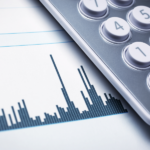Entering the forex market means that we must equip ourselves with a lot of financial knowledge, trading methods, analytical techniques, capital management skills, risk management, etc. But the first and most essential thing that needs to be grasped and understood are the terms related to forex trading. In this article, Investiki explains “What is margin and free margin, as well as the related terms in MT4.
What is margin in MT4?
To understand its definition, you need to relate the leverage ratio in forex trading. Leverage allows investors to place orders with a value higher than their capital. This means that both profits and losses are amplified.
For example, you only have $1,000 in your account but you want to increase the size of your position up to $100,000. It would be helpful if you used leverage. And for your use of leverage, the forex broker asks you to deposit an amount that is margin.
So, margin is the minimum amount that an investor must deposit to open a position in the market.
The margin depends on the leverage ratio you use, the leverage tells you how much percentage of the amount you need to deposit to open the order and that percentage is the margin rate. The higher the leverage, the lower the margin rate and the lower the margin.
The relationship between leverage and margin rate is shown in the following table:
| influenza | Margin rate |
| 1:1 AM | 100% |
| 1:2 AM | 50% |
| 1:100 am | 1% |
| 1:200 am | 0.5% |
| 1:400 am | 0.25% |
| 1:500 am | 0.2% |
| 1:1000 am | 0.1% |
For example, the USD/CAD pair is quoted as Bid: 1.25500, Ask 1.25580. The account has a leverage of 1:400 and a balance of $500. You want to place a purchase order with a volume of 0.5 lots
Buying 0.5 lots of USD/CAD means buying 50,000 USD (1 lot equals 100,000 units of the base currency). If your account is in USD, you don’t need to convert the exchange rate.
You use leverage of 1:400, equivalent to a margin rate of 0.25%, so the minimum amount you need to deposit or margin to open this trade is 0.25% x $50,000 = $125.
Other margin terms
Some other margin-related terms you need to know are:
- Margin Used: Each trading order is opened, the trader must deposit an amount of margin. The total margin of all open positions is the margin used.
- Free margin: The amount left in the account after deducting the margin used, free margin = capital – margin used. Free margin is also the amount of margin you can use to open new positions. The lower the free margin, the less likely it is to open new orders.
- Margin level: this is the percentage of net worth relative to the total margin used. Margin level = (Equity/Margin used) x 100%. If you do not open more or close fewer running orders, the margin used will not change. The margin level will depend only on your net worth.
While open orders are running, the margin level will always change due to the constantly fluctuating capital. After the orders have been matched, the margin used is less than the net worth. The margin level is > 100%. When orders are in execution, the order is at a loss. Fairness goes down. The margin level drops. If the net worth is reduced by the margin used, the margin level = 100%. If lower, the margin level < 100%.
Margin level <= 100% indicates free margin <=0. At this point, you cannot open any more new orders. When the margin level decreases, you are losing heavily. The account is in an unsafe state, you need to take timely measures to avoid a net loss (margin level = 0% when the capital = 0) or the account is negatively damaged (margin level < 0% when the capital < 0) if the market continues to go against your order. And if after your order starts to improve, the fairness will increase, the margin level will increase, the account will return to a safe state. A trading account is considered safe when the margin level is > 100%, when this ratio decreases, forcing you to intervene in your account or trading orders to improve it.
To prevent investors from not regularly monitoring running transactions or being negligent in not paying attention to the margin level ratio, forex brokers have set a specific limit if the margin level falls below the limit. The exchange will notify traders via an order/warning called Margin Call during this period. They can intervene in time, avoiding the situation of letting the account suffer heavy losses if the market continues to fluctuate in the opposite direction. Typically, forex brokers often choose a 100% limit. When the margin level falls below 100%, a margin call occurs.
When a margin call occurs, you will have two interventions to account for or open orders to improve the margin level:
- Or deposit more money into the account – > the capital increases – > margin level increases.
- Close part or all of the losing positions – > margin used decreases – > the capital increases – > margin level increases.
If you do not intervene in these two ways but are sure that the market will quickly return to the expected direction, the margin level will increase again. However, if the market is still against you, the margin level will continue to fall deeply more, up to a lower limit to the margin call, the broker will automatically close all your running orders, including those that are profitable.


